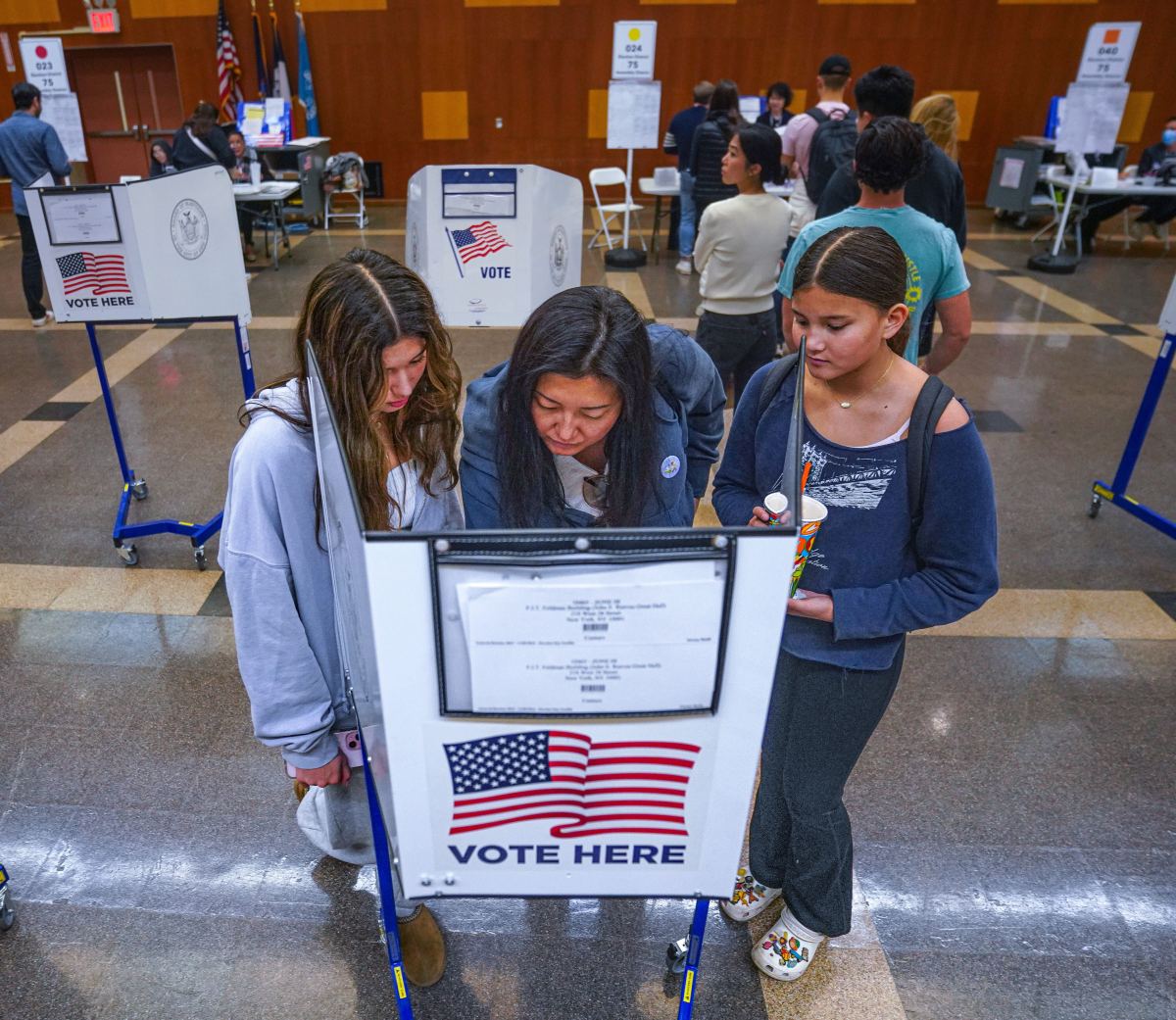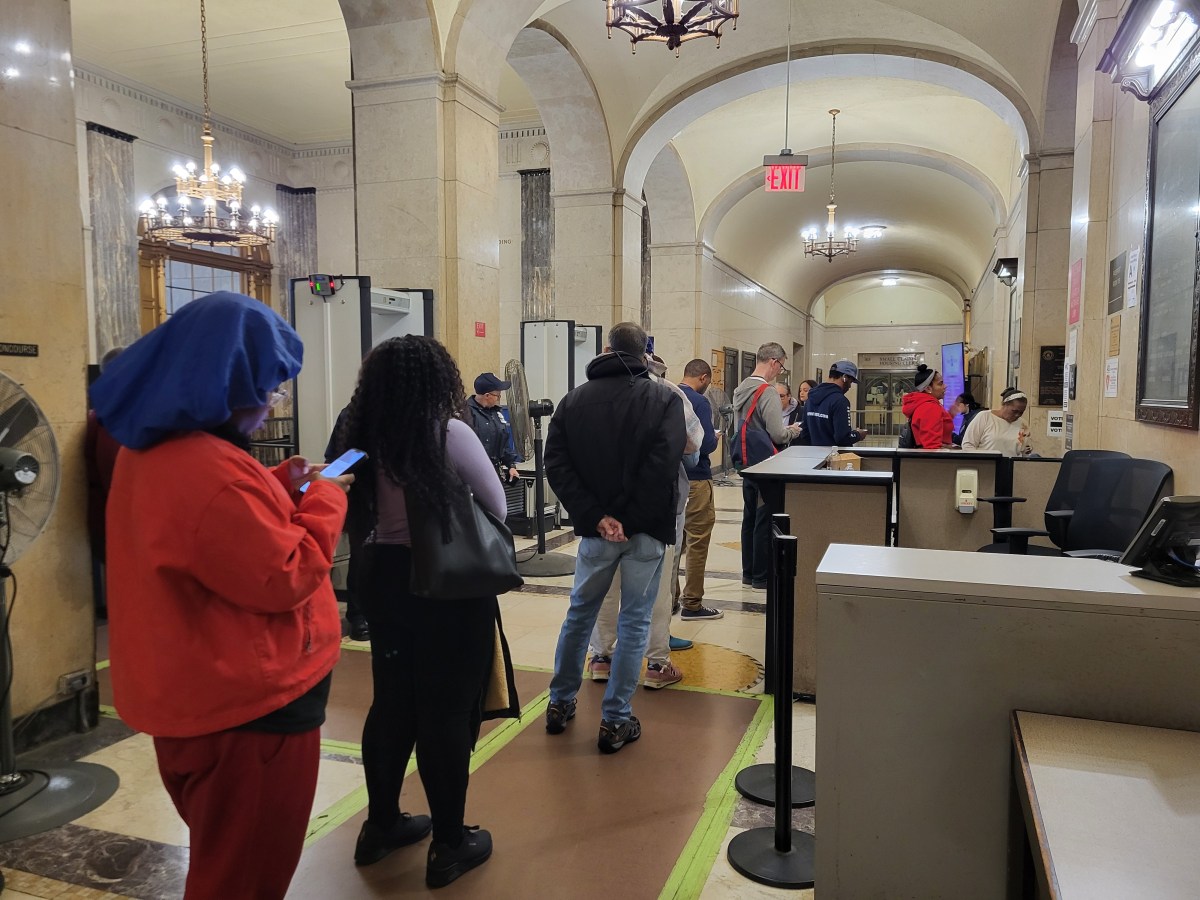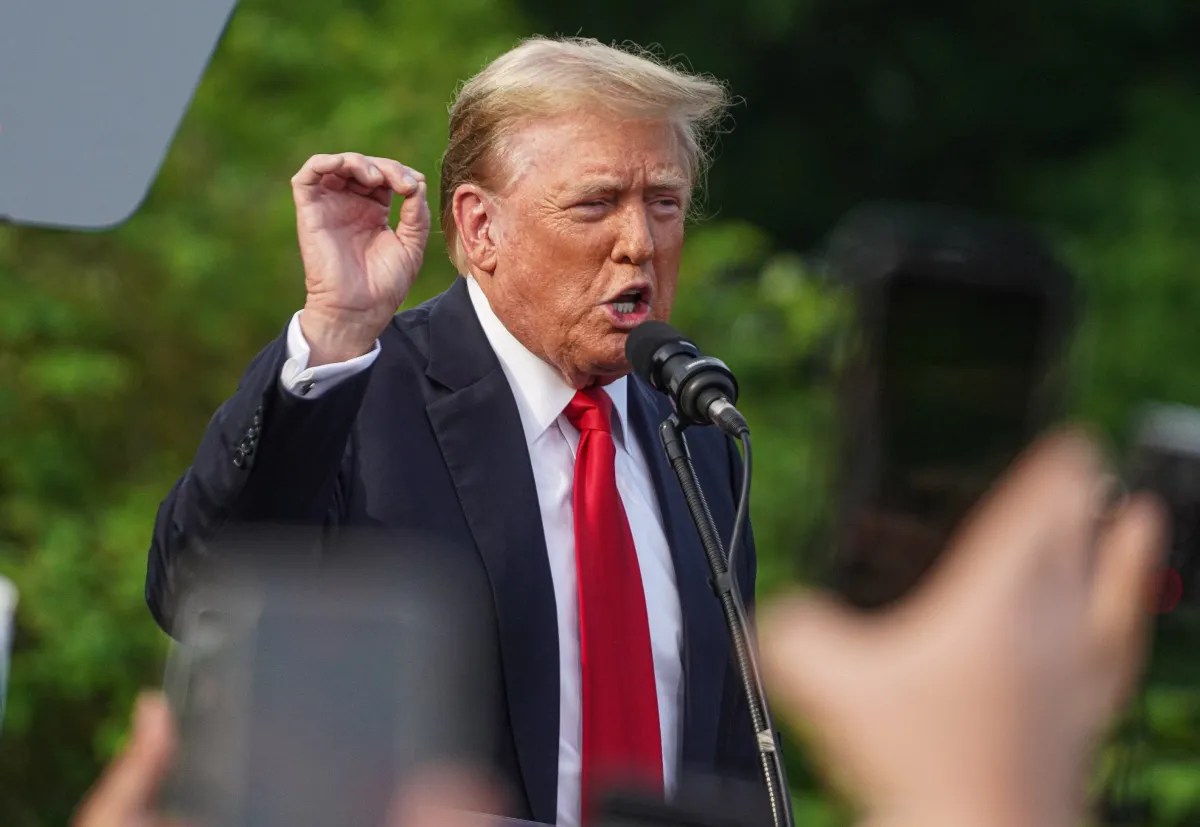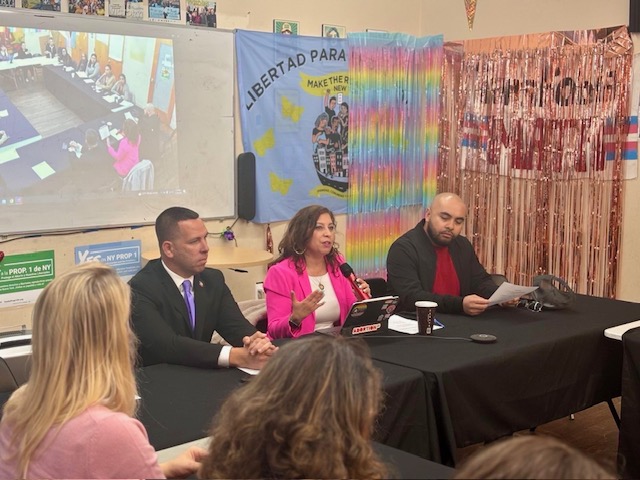Republican President-elect Donald Trump made significant gains across the country in the 2024 general election, including in deep blue New York City — where he made inroads in working-class communities of color across the five boroughs.
According to unofficial results from the city Board of Elections (BOE), Trump, who has previously not gained much support in the Big Apple, received 30% of the vote across the city, compared to Democratic Vice President Kamala Harris’ 68%.
Even so, Trump improved his share of the vote by 7%—or 94,612 votes—compared to when he ran against President Biden in 2020. During that election, which Biden won, Trump received 23% of the vote within the five boroughs, compared to Biden’s 76%.
Pointing fingers
Mayor Eric Adams, during a Tuesday news conference, said it “doesn’t surprise me” that Trump’s performance in the city improved this cycle. The conservative Democrat, who often butts heads with the left flank of his party, blamed progressives for Harris losing ground in the city.
The mayor charged that the left is too consumed with “philosophical stuff” that he did not enumerate, instead of the pocketbook issues that working-class New Yorkers care about — such as public safety and affordability.
“Some of the things that you talk about is not what working-class people [are] talking about,” Adams said. “Working class people are concerned about the future for their families…So, when you’re not talking about those real issues, it does not surprise me that people are saying, ‘Listen, you’re not speaking on my behalf anymore.'”
That prompted Public Advocate Jumaane Williams, in a Tuesday statement, to argue that it is not the left but rather “fearmongering” around crime and immigration by officials like Adams that is hurting Democrats at the ballot box.
“Just as he did in 2022, the mayor is blaming progressives for not putting out the flames he fanned on issues of public safety and immigration, among others,” Williams said. “He correctly identifies problems that are top issues for our constituents, but rather than elevate the solutions available, he joined his fellow conservatives in fearmongering and scapegoating.”
Manhattan

Trump even saw a slight bump in the deepest blue borough: Manhattan. He gained roughly 5 percentage points, or 17,943 votes, among Manhattanites between 2020 and 2024 — a shift from 12% to 17% respectively.
At the same time, Harris lost about 5% of the Manhattan vote share last Tuesday compared to Biden in 2020. She came up with 80% of the vote this year, while Biden nabbed 85% in 2020.
Manhattan Borough President Mark Levine said that while the borough had the highest vote for Harris out of any county in the state, a closer look at the way some neighborhoods trended shows a different picture.
“If you zoom in a bit neighborhood by neighborhood, you see a more nuanced story, where there was a pretty marked surge in Trump support in Latino, particularly Dominican areas, and to a lesser extent in Chinatown,” Levin said in an interview with amNewYork Metro.
Trump picked up the most votes in Washington Heights and Inwood, according to data compiled by the CUNY Graduate Center. The president-elect improved his vote share the most in eight election districts in the predominantly Latino and working-class Upper Manhattan neighborhoods.
Between those eight districts, Trump boosted his vote share by an average of 19%.
Levine said Trump voters told him it was their perception that Democrats are failing to address issues like crime and the economy that motivated them to cast their ballots for the Republican standard-bearer over Harris.
“A lot of voters I heard from who went for Trump decided that they don’t trust the voters on public safety anymore; we’ve gotta address that,” he said. “Also, the economy’s a major concern. It’s a very entrepreneurial community, a lot of business owners, people who are concerned about Democrats not being as good for small business. Concerns about the cost of living. Concerns about the cost of housing.”
Shifts towards Trump were far bigger in the outer boroughs of the Bronx, Queens, and Brooklyn.
The Bronx

Trump made his biggest gains in the Bronx, where he improved his performance by 11% between 2020 and this year, according to unofficial BOE results.
When he ran against President Biden four years ago, Trump nabbed just 16% of the vote in the Boogie Down. But he boosted his vote share in the borough to 27% this year, an increase of 23,802 votes.
Before this year, the Bronx was the deepest blue borough in the city — yet Trump, during his campaign, sought to put a few dents in the armor.
The president-elect visited the Bronx twice during his campaign, stopping by a barbershop just days before the election and holding a rally attended by hundreds of supporters in May. His goal was to increase his support among Black and Latino men.
While Harris still handily won the borough, Trump’s efforts appeared to work in getting more Bronxites to cast their ballots in his favor.
Bronx Republican and Conservative party leaders told the Bronx Times they see Trump’s improved performance in the borough as a sign that Republicans will have more electoral success there in the years to come.
“I think we’re in for a party reset,” said Mike Rendino, chair of the Bronx GOP. “The Republican party is finally the diverse, blue-collar party that I’ve always dreamed of and we worked for.”
While Trump improved his vote share across many parts of the borough, including in the tony area of Fieldston, he made the greatest gains in East Bronx neighborhoods, including Throggs Neck, Morris Park, Pelham Bay Park, and City Island. Rendino said that was mostly due to Latino voters who liked Trump’s messaging around issues like the cost of living and immigration.
Many of the same areas last year elected the borough’s first Republican City Council member — Kristy Marmorato — in two decades.
Queens
The World's Borough also shifted in Trump's favor last Tuesday.
The president-elect saw a 10.5% boost in Queens this year, according to unofficial BOE results. That equates to a rise from 26.8% in 2020 to 37.3% this year — 35,359 more votes.
Democratic Assembly Member Jessica Gonzalez-Rojas — who represents parts of heavily-Latino Queens neighborhoods including Jackson Heights, Corona and Elmhurst — said she believes Trump won more votes in the borough because Democrats took Latino and Asian communities for granted, QNS reported. Many of the communities the Assembly member represents in Albany shifted toward Trump this year.
“We already know the issues Latinos care about and that is pocketbook issues," Gonzalez-Rojas told QNS in a statement. "But we cannot allow what the Republicans have done to overshadow what we did not do.”
The Assembly member argued that Latino and Asian voters who gravitated to Trump could be won back if Democrats embrace further left policies like raising taxes on the wealthy to fund better government programs.
“It is time for our state to increase revenue by taxing the rich to address the basic needs of Latino and Asian voters, including affordable housing, food prices, childcare access and more," she said. "We have more work to do and I’m ready to push our state to do it.”
Brooklyn
In Brooklyn, Trump secured 8% more votes this year than in 2020, increasing his vote share from 24% to 30%.
Trump performed strongest in southern Brooklyn, which has been trending more and more red over the past few election cycles. He improved his margins in neighborhoods, including Sheepshead Bay, Coney Island, Brighton Beach, Borough Park, Gravesend, and Bensonhurst.
Many of those areas have large East Asian, Orthodox Jewish and Russian populations.
In the predominantly Asian community of Bensonhurst, Trump earned 70% of the vote, Brooklyn Paper reported. That was an improvement of about 20% from four years ago.
Republicans flipped three Assembly seats in southern Brooklyn in 2022 and captured the 17th state Senate seat from Democrat Iwen Chu this year. The winner, Republican former NYPD officer Steve Chan, said he won because Chu, a progressive Democrat, did not align with the district she represented.
“Tonight we won, and it was easy, and I’ll tell you why,” Chan said last Tuesday. “It was easy for our community of 350,000 to realize that we did not have someone representing us well, and tonight they spoke.”
With reporting by Emily Swanson, Shane O’Brien and Kirstyn Brendlen.



































